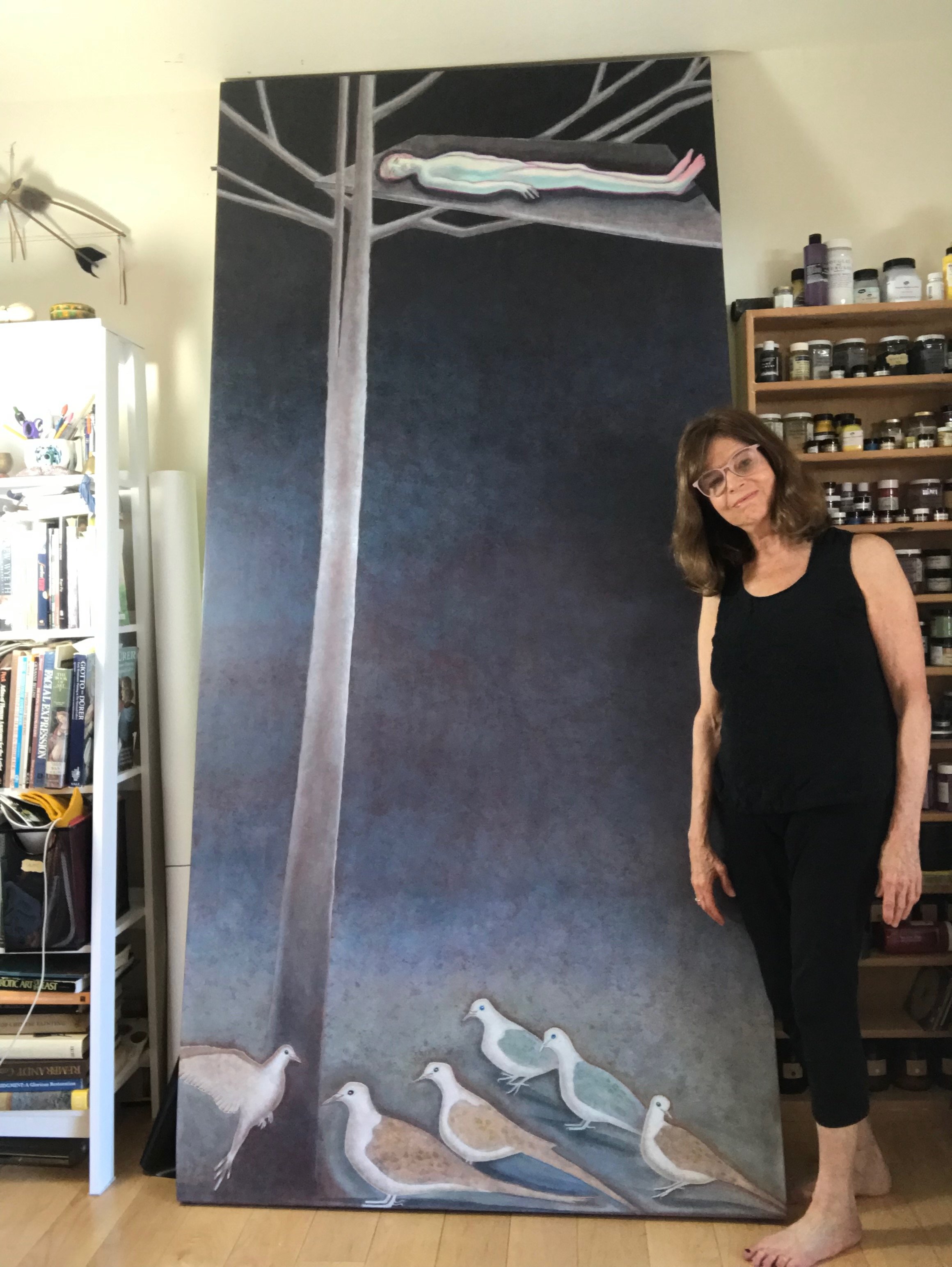About Lora
At the age of 19, Lora Arbrador was given a recipe for making egg tempera paint by a college professor who admitted no knowledge of the technique. Like a musician with a strong affinity for a particular instrument, Arbrador found her creative home in egg tempera.
To support her art practice, Arbrador became a registered nurse and the medical world has been the inspiration for many of her paintings, including the series, Ways of Dying: A Chronicle of the AIDS Epidemic. Her painting, Don’t Go My Friend: The Death of John Walsh, MD, won first place at the Art and Healing exhibit at Artwest Gallery in 1997.
Captivated by the fascinating history of egg tempera, Arbrador was invited to speak at the Johnson Museum of Art at Cornell University in 1995. That lecture has evolved into two presentations: What is Egg Tempera? and Which Came First? A Taste of Egg Tempera History. In 1997, Arbrador co-founded the Society of Tempera Painters which was modeled after the 1901 Society of Painters in Tempera in England.
Arbrador has exhibited in galleries and museums throughout the US, including South Bend Regional Museum of Art, Wenatchee Valley College Art Gallery and the Bade Museum of the Pacific School of Religion.
When not painting, writing or practicing nursing, Arbrador discovers new plants for her shade garden, plays banjo and learns songs from the Great American Songbook. Her home studio is in San Francisco, California, USA.
About the Art
My work as a registered nurse inspires and informs my paintings. The beauty of the body includes not just its surface form but the inner landscape of fluids and secretions—the blood of menstruation and the milk of lactation appear in my art. The theme of intimacy, explores the romance between humans and nature as well as human to human connection. And I find aesthetic poignancy in how humans face death.
I try to veer away from conventional standards of beauty, which can look trite, worn, or just boring. Instead, I try to capture the person’s mood or expression. This is challenging, because in addition to shunning typical beauty, I try to avoid caricature or the grotesque.
My overall mission is to confront the viewer, and myself, with ecstatic and sometimes troubling narratives that are often hidden from view,
Proto-Renaissance artists, formerly called “Italian Primitives” such as Giotto and Giovanni Bellini are my stylistic mentors.
This transitional period of art forms a bridge between the static frontal facing gilded Byzantine icons to the fluid naturalism of the High Renaissance. It is within these bounds that I construct the other-worldly yet recognizable imagery that I consider to be my artistic voice.
Painting at a time when oil painting was not yet perfected, these artists worked in my favored medium egg tempera.
Sign up for my monthly newsletter, "Art Blotter Plus" for missives from my world of art and beyond!
Meeting at the Golden Gate by Giotto
My preferred medium is egg tempera. The yolk of an egg is mixed with powdered pigments, then brushed onto a wooden panel, which has been coated with a chalk/glue primer called “gesso.” I am enthralled with the sensuality of its handling and the optical effects that can be achieved. Egg tempera is known as a difficult medium that can require many hours of preparation, underpainting and glazing. I believe this effort supplies the traction and suffering I need to produce the pure and deep art that I strive towards.
Click below to view my presentation What is Egg Tempera?”



